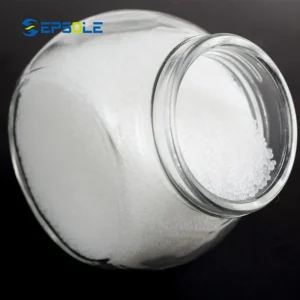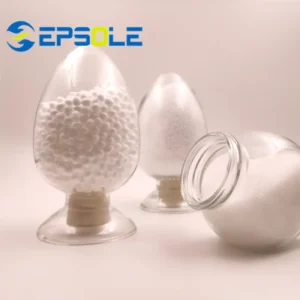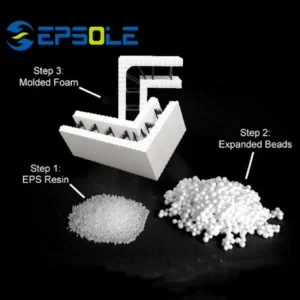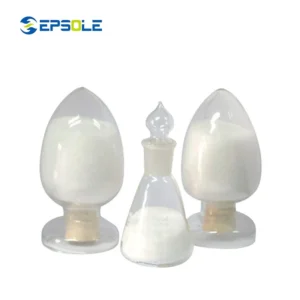In the realm of Expanded Polystyrene (EPS), selecting the appropriate grade is crucial for various applications. EPS, a lightweight cellular plastic material, finds utility in insulation, packaging, construction, and even sculpting.
This guide delineates the nuances of EPS grades to aid in informed decision-making.
Importance of EPS Grades
The importance of EPS grade lies in their significant impact on various aspects of product performance, cost-effectiveness, and environmental sustainability.
Here’s a more detailed explanation:
- Product Performance: EPS grades determine the material’s properties such as density, strength, and insulation capabilities. Choosing the right grade ensures that the EPS effectively meets the requirements of its intended application. For example, selecting a high-density EPS grade for insulation provides better thermal resistance, improving energy efficiency and comfort within buildings.
- Cost-effectiveness: Selecting the appropriate EPS grade can contribute to cost savings over the long term. While higher-density EPS grades may have a higher initial cost, they often offer better performance and durability, reducing the need for frequent replacements or repairs. Conversely, opting for a lower-density grade may initially seem more economical, but it could lead to increased energy consumption or structural issues in the future, resulting in higher overall costs.
- Environmental Sustainability: EPS grades play a crucial role in promoting ecological sustainability. Choosing EPS grades with higher insulation properties can help reduce energy consumption in buildings, leading to lower carbon emissions and a smaller environmental footprint. Additionally, selecting EPS grades made from recycled materials or recyclable at the end of their lifespan contributes to a more sustainable approach to construction and manufacturing.
The importance of EPS grades lies in their ability to optimize product performance, enhance cost-effectiveness, and promote environmental sustainability across various applications, ranging from insulation and packaging to construction and beyond. Choosing the right EPS grade requires careful consideration of specific project requirements, performance expectations, and long-term sustainability goals.
Different EPS Grades
Certainly! Here’s a more detailed look at each EPS grade, highlighting their unique properties, benefits, and specific applications:
Standard Grade EPS
Characteristics:
- Density: Typically ranges from 10 to 30 kg/m³, providing a balance between strength and lightness.
- Thermal Insulation: Offers decent thermal insulation properties, making it suitable for general insulation purposes.
- Moisture Resistance: Possesses good resistance to moisture, preventing water absorption and subsequent degradation.
- Durability: Durable enough for various uses while maintaining cost-effectiveness.
Benefits:
- Cost-Effective: Lower cost compared to specialized grades, making it economical for widespread applications.
- Versatile: Suitable for a broad range of applications due to its balanced properties.
- Lightweight: Easy to handle and install, reducing labor costs and effort.
Applications:
- Building Insulation: Used in walls, roofs, and floors to enhance energy efficiency.
- Packaging: Protects products during shipping, particularly electronics, appliances, and other fragile items.
- Construction: Utilized as lightweight fill material in geotechnical projects, reducing load on underlying structures.
- Crafting and Model Making: Popular in hobbyist projects due to ease of cutting and shaping.
High Expansion Grade EPS
Characteristics:
- Expansion Capacity: Can expand significantly during molding, resulting in a more voluminous and lighter product.
- Porosity: Higher porosity leads to excellent cushioning and shock absorption.
- Flexibility: Maintains structural integrity while being flexible enough to absorb impacts.
Benefits:
- Superior Cushioning: Provides excellent protection for delicate and sensitive items.
- Material Efficiency: Expands to fill molds effectively, reducing the amount of raw material needed.
- Lightweight: Further reduces shipping weight, cutting transportation costs.
Applications:
- Protective Packaging: Ideal for shipping delicate electronics, glassware, medical instruments, and other fragile items.
- Insulated Shipping Containers: Used in food and pharmaceutical industries for thermal protection during transit.
- Recreational Products: Employed in the manufacturing of items such as surfboards and flotation devices due to its buoyancy and impact resistance.
Flame Retardant Grade EPS
Characteristics:
- Fire Safety: Contains flame retardant additives that help it self-extinguish when exposed to flames, reducing fire spread.
- Smoke Emission: Designed to emit lower levels of smoke, enhancing safety in fire scenarios.
- Regulatory Compliance: Meets various international fire safety standards and building codes.
Benefits:
- Enhanced Safety: Provides an extra layer of protection in buildings and other structures, contributing to overall fire safety.
- Versatile Use: Suitable for applications requiring fire safety without compromising on other performance characteristics.
- Peace of Mind: Ensures compliance with stringent safety regulations, reducing liability and risk.
Applications:
- Building Insulation: Critical for insulating public buildings, commercial properties, and residential spaces where fire safety is a concern.
- Automotive Components: Used in vehicle interiors and exteriors to enhance fire safety.
- Hazardous Material Packaging: Essential for safely transporting and storing flammable or reactive substances.
Fast Cycling Grade EPS
Characteristics:
- Rapid Molding: Optimized for quick molding cycles, allowing for faster production rates.
- Flow Properties: Excellent flow characteristics ensure uniform filling of molds, reducing defects.
- Dimensional Stability: Maintains consistent dimensions and structural integrity throughout the production process.
Benefits:
- Increased Efficiency: Reduces manufacturing time, leading to higher productivity and lower operational costs.
- High Precision: Ensures that products meet exact specifications, minimizing waste and rework.
- Adaptability: Suitable for various complex shapes and designs, enhancing the versatility of production capabilities.
Applications:
- Automotive Manufacturing: Used for producing high-precision parts quickly and efficiently, essential for the automotive industry’s demanding production schedules.
- Consumer Electronics: Ideal for mass-producing electronic device casings and components with tight tolerances.
- Mass-Produced Packaging: Perfect for large-scale packaging operations where speed and precision are critical.
Understanding the distinct properties and advantages of each EPS grade is essential for selecting the most suitable EPS raw material for your specific needs.
Standard grade EPS offers versatility and cost-effectiveness, high expansion grade EPS provides superior cushioning, flame retardant grade EPS enhances safety, and fast cycling grade EPS boosts manufacturing efficiency. By carefully considering the requirements of your project and the unique benefits of each EPS grade, you can ensure optimal performance, safety, and cost savings.
Density-Based Classification of EPS Grades

Density-based classification of EPS (Expanded Polystyrene) is crucial because it determines the material’s physical properties and suitability for various applications. Density is measured in kilograms per cubic meter (kg/m³) and affects the strength, thermal insulation, and durability of the EPS. Here’s a more detailed look at different density classifications of EPS:
Low-Density EPS (LD-EPS)
Characteristics:
- Density Range: Typically between 10 to 15 kg/m³.
- Lightweight: Extremely light, making it easy to handle and transport.
- Thermal Insulation: Offers good thermal insulation properties due to its air-filled cellular structure.
- Flexibility: More flexible and less rigid compared to higher-density EPS.
Benefits:
- Cost-Effective: Generally cheaper due to less material used.
- Easy Handling: Lightweight nature simplifies installation and reduces labor costs.
- Energy Efficiency: Provides effective insulation, contributing to energy savings.
Applications:
- Packaging: Ideal for protecting lightweight and delicate items during shipping.
- Crafting and Prototyping: Used in model making, arts, and crafts due to ease of cutting and shaping.
- Thermal Insulation: Suitable for applications where high compressive strength is not required, like in certain types of building insulation.
Medium-Density EPS (MD-EPS)
Characteristics:
- Density Range: Typically between 16 to 24 kg/m³.
- Balanced Properties: Offers a good balance between strength and insulation.
- Durability: More durable and resistant to compression compared to low-density EPS.
- Versatility: Suitable for a wider range of applications due to enhanced structural integrity.
Benefits:
- Enhanced Strength: Better structural support for more demanding applications.
- Good Insulation: Provides effective thermal insulation while maintaining strength.
- Versatile Use: Suitable for both packaging and construction applications.
Applications:
- Building Insulation: Used in walls, roofs, and floors where moderate strength and insulation are needed.
- Protective Packaging: Ideal for heavier or more valuable items requiring both protection and cushioning.
- Construction: Used in geotechnical applications and lightweight concrete.
High-Density EPS (HD-EPS)
Characteristics:
- Density Range: Typically between 25 to 35 kg/m³ or higher.
- High Strength: Offers excellent compressive strength and rigidity.
- Superior Durability: Highly resistant to impact, deformation, and mechanical stresses.
- Thermal Insulation: Provides excellent thermal insulation properties, making it highly effective in energy conservation.
Benefits:
- Structural Integrity: Suitable for load-bearing applications and environments requiring high durability.
- Long-Lasting: Highly resistant to wear and tear, ensuring long-term performance.
- Effective Insulation: Exceptional thermal insulation properties help maintain energy efficiency.
Applications:
- Structural Insulation Panels (SIPs): Used in high-performance building insulation systems.
- Geofoam: Employed in road construction, embankments, and foundations to reduce loads and improve stability.
- Impact Protection: Used in helmets, car seats, and other safety equipment due to its high impact resistance.
Comparison of Density-Based EPS Grades
Thermal Insulation:
- Low-Density: Good for general insulation but may require additional layers for optimal performance.
- Medium-Density: Provides balanced insulation suitable for most building applications.
- High-Density: Offers superior insulation, ideal for energy-efficient buildings and extreme climates.
Strength and Durability:
- Low-Density: Suitable for non-load-bearing applications with minimal stress.
- Medium-Density: Good for moderate load-bearing applications with enhanced durability.
- High-Density: Best for high load-bearing applications and environments requiring robust performance.
Cost:
- Low-Density: Most cost-effective, ideal for budget-sensitive projects.
- Medium-Density: Moderately priced, offering a good balance between cost and performance.
- High-Density: Higher initial cost but offers long-term savings through durability and performance.
Applications for Different Polystyrene Grades
Let’s explore the diverse applications for different polystyrene grades:
Low-Density EPS (LD-EPS)
Packaging for Lightweight and Fragile Items:
- LD-EPS is commonly used for packaging delicate items such as electronics, glassware, and ceramic products. Its lightweight nature provides cushioning and protection during transit.
Crafting and Art Projects:
- Due to its ease of cutting and shaping, LD-EPS is popular in crafting and art projects. It serves as a versatile material for creating sculptures, models, and decorative items.
Insulation in Non-Load-Bearing Applications:
- In construction, LD-EPS is utilized for thermal insulation in non-load-bearing applications like interior walls, ceilings, and underfloor insulation where its lightweight properties are advantageous.
Medium-Density EPS (MD-EPS)
Building Insulation in Residential and Commercial Construction:
- MD-EPS is widely used for thermal insulation in walls, roofs, and floors of residential and commercial buildings. It provides effective insulation while offering structural support.
Protective Packaging for Medium-Weight Items:
- Medium-density EPS is suitable for packaging medium-weight items such as appliances, furniture, and automotive parts. It offers a balance between cushioning and structural integrity.
Lightweight Concrete in Construction:
- MD-EPS beads are mixed with cement to create lightweight concrete used in construction for applications such as insulating concrete forms (ICFs), lightweight fill, and void fill.
High-Density EPS (HD-EPS)
Structural Insulation Panels (SIPs) in Energy-Efficient Buildings:
- HD-EPS is a key component in structural insulation panels (SIPs) used for constructing energy-efficient buildings. SIPs offer superior insulation and structural strength, reducing energy consumption.
Geofoam for Civil Engineering Projects:
- HD-EPS geofoam is used in civil engineering projects for applications such as road construction, embankments, and slope stabilization due to its lightweight nature and high compressive strength.
High-Load-Bearing Packaging and Shipping Containers:
- HD-EPS packaging is utilized for heavy or high-value items that require superior protection during shipping and handling. It offers excellent impact resistance and structural integrity.
Flame Retardant EPS
Building Insulation in Fire-Prone Areas:
- Flame retardant EPS is essential for insulation in buildings located in fire-prone areas. It helps reduce fire risk and complies with stringent fire safety regulations.
Packaging for Hazardous Materials:
- Flame retardant EPS packaging is used for transporting and storing hazardous materials such as chemicals and batteries, providing an added layer of safety in case of fire.
Automotive Components for Enhanced Fire Safety:
- Flame retardant EPS is incorporated into automotive components such as interior trim and engine compartments to improve fire safety in vehicles.
Fast Cycling EPS
Automotive Manufacturing for Mass-Produced Parts:
- Fast cycling EPS is used in automotive manufacturing for producing mass-produced parts with high precision and efficiency, reducing production time and costs.
Consumer Electronics for Rapid Prototyping:
- Fast cycling EPS is employed in the rapid prototyping of consumer electronics casings and components, allowing for quick iteration and testing of designs.
High-Volume Packaging Operations:
- Industries with high-volume packaging operations, such as food and beverage, utilize fast cycling EPS for efficiently producing packaging materials while maintaining quality and consistency.
Different polystyrene grades offer a wide range of applications across various industries. From lightweight packaging to structural insulation and civil engineering projects, each grade of polystyrene caters to specific needs and requirements, providing solutions for insulation, packaging, construction, and manufacturing applications.
| Polystyrene Grade | Characteristics | Applications |
|---|---|---|
| Low-Density EPS (LD-EPS) | – Density: 10-15 kg/m³ <br> – Lightweight and flexible <br> – Good thermal insulation | – Packaging for lightweight and fragile items <br> – Crafting and art projects <br> – Insulation in non-load-bearing applications |
| Medium-Density EPS (MD-EPS) | – Density: 16-24 kg/m³ <br> – Balanced strength and insulation <br> – Durable | – Building insulation in residential and commercial construction <br> – Protective packaging for medium-weight items <br> – Lightweight concrete in construction |
| High-Density EPS (HD-EPS) | – Density: 25-35 kg/m³ or higher <br> – High strength and rigidity <br> – Superior thermal insulation | – Structural insulation panels (SIPs) in energy-efficient buildings <br> – Geofoam for civil engineering projects <br> – High-load-bearing packaging and shipping containers |
| Flame Retardant EPS | – Contains flame retardant additives <br> – Reduced smoke emission <br> – Complies with fire safety standards | – Building insulation in fire-prone areas <br> – Packaging for hazardous materials <br> – Automotive components for enhanced fire safety |
| Fast Cycling EPS | – Optimized for quick molding cycles <br> – Excellent flow properties <br> – Dimensional stability | – Automotive manufacturing for mass-produced parts <br> – Consumer electronics for rapid prototyping <br> – High-volume packaging operations |
The table above provides a clear overview of the applications for different polystyrene grades based on their characteristics. Each grade offers unique benefits suited to specific industries and project requirements, ensuring optimal performance, safety, and efficiency.
Various Grades of Polystyrene
Here is the comprehensive table with all the specified grades, characteristics, and applications:
| Polystyrene Grade | Type | Density (kg/m³) | Thermal Conductivity (W/mK) | Compressive Strength | Weight (lbs) | Weight (kg) | Applications |
|---|---|---|---|---|---|---|---|
| 100% Recycled | Unspecified | N/A | N/A | N/A | N/A | N/A | Packaging |
| Load Bearer | Packaging | N/A | 10 | N/A | 40.00 | 18.18 | Packaging |
| Low Weight | Packaging | N/A | 10 | N/A | 40.00 | 18.18 | Packaging – best for fragile items |
| Standard Density (virgin or recycled) | EPS 70 | 15 | 0.038 | 70 kPa | 60.00 | 27.27 | Furniture Packaging, White Goods Packaging, Void Fill (underneath tarmac, inside concrete) |
| High Density (virgin or recycled) | EPS 100 | 20 | 0.036 | 100 kPa | 80.00 | 36.36 | High spec packaging, Void fill / former |
| Low Weight FRA | FRA rated | N/A | 10 | N/A | 40.00 | 18.18 | FRA rated packaging, Furniture infill / cores, Theatre props with a rougher finish |
| Standard Density FRA | EPS 70 | 15 | 0.038 | 70 kPa | 60.00 | 27.27 | Display and Design products with a “standard” finish, Cake Boards, Cavity Wall Insulation, Window Thermal Barriers, Carving, Standard Industry Sheets |
| Heavy Density FRA | EPS 100 | 20 | 0.036 | 100 kPa | 80.00 | 36.36 | Design and Display products requiring a clean finish – giant letters, Carpet Cassettes, Umbilical Cable Reels, Void Formers/Fill, Carving, Surf Boards |
| Extra Heavy Density FRA | EPS 150 | 25 | 0.035 | 150 kPa | 100.00 | 45.45 | Design and Display products requiring a smooth finish, Industrial Heavy Density Packaging, Void Former, Molds, Insulation |
| Ultra-High Density FRA | EPS 200 | 30 | 0.034 | 200 kPa | 120.00 | 54.55 | Construction, Void Formers, Design and Display, Intricate Carving, High Spec Load Bearing |
| Specialist Materials | EPS 250 | 35 | 0.033 | 250 kPa | 140.00 | 64.00 | Ground heave protection, Formwork system, Gas venting medium, Pile collars, Structural fill, Arch formers, Staircase soffit formers, Column formers, Sacrificial guide wall former, Re-useable guide wall formwork, Sheet pile infills, Structural connection between a bored pile and a basement slab construction, Pile trimming aid, EWI boards, Flooring under slab, Umbilical cable reel, Railway station platform extensions, Cinema stadium seating, Vehicle and pedestrian ramps, Modular builds, Pontoons, Structural insulated panels (SIPs), Passive foundations, Landscaping |
| Specialist Materials | EPS 300 | 40 | 0.033 | 300 kPa | 160.00 | 73.00 | Same as EPS 250 |
| Specialist Materials | EPS 350 | 45 | 0.033 | 350 kPa | 180.00 | 82.00 | Same as EPS 250 |
| Specialist Materials | EPS 400 | 50 | 0.033 | 400 kPa | 200.00 | 91.00 | Same as EPS 250 |
| Specialist Materials | EPS 500 | 55 | 0.033 | 500 kPa | 220.00 | 100.00 | Same as EPS 250 |
| Grey Standard Density | EPS 70 | 15 | 0.032 | N/A | 60.00 | 27.27 | Insulation Board, Design & Display where grey color is required throughout, High Insulative Packaging |
| Grey High Density | EPS 100 | 20 | 0.031 | N/A | 80.00 | 36.36 | Insulation |
This table comprehensively outlines the various grades of polystyrene, their key characteristics, and specific applications, facilitating an informed choice based on project requirements.
Conclusion
Selecting the suitable EPS grade demands meticulous consideration of project requirements, environmental factors, and performance expectations. Consultation with experts and thorough testing ensures optimal outcomes.





